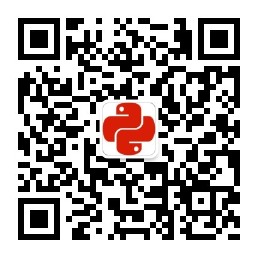Python魔法:20个让你编程事半功倍的奇淫技巧(建议收藏)
Python作为一门灵活、充满技巧的语言,有着很多奇技淫巧,今天小编就跟大家分享一下在平时工作中所积累的技巧,这里面既有语法上的技巧,也有库函数的应用,可以帮助大家在平时的工作中提升效率,规避某些错误,一起来看看吧。
- 列表推导式
- 字典推导式
- 使用
zip进行并行迭代 - 使用
enumerate获取迭代器索引和值 - 使用
collections.Counter进行计数 - 使用
map函数进行批量操作 - 使用列表解析展平列表
- 列表内容转字符串
- 去除列表中重复元素
- 将字典值作为参数传递
- 两个变量值互换
- 连续赋值
- 链式比较
- 重复列表
- 重复字符串
- 三目运算
- 字典合并
- 字符串反转
- 列表转字符串
- for else 语句
1、列表推导式
使用一行代码生成列表,提高代码的简洁性和可读性。
squared = [x**2 for x in range(10)]
print(squared)
结果
[0, 1, 4, 9, 16, 25, 36, 49, 64, 81]
当我们使用列表推导式 [x**2 for x in range(10)] 时,它等价于使用普通的 for 循环来生成一个列表。让我们将列表推导式转换为等效的普通 for 循环代码
squared = [] # 创建一个空列表,用于存放计算结果
for x in range(10): # 对于范围内的每一个数 x
squared.append(x**2) # 计算 x 的平方并将结果添加到列表 squared 中
print(squared) # 打印最终的列表 squared
2、字典推导式
类似列表推导式,用于创建字典。所以代码用大括号包裹
square_dict = {x: x**2 for x in range(5)}
print(square_dict)
结果
{0: 0, 1: 1, 2: 4, 3: 9, 4: 16}
3、使用 zip 进行并行迭代
将多个可迭代对象压缩在一起进行并行迭代。
names = ['Alice', 'Bob', 'Charlie']
ages = [30, 35, 40]
for name, age in zip(names, ages):
print(name, age)
结果
Alice 30
Bob 35
Charlie 40
4、使用 enumerate 获取迭代器索引和值
在迭代时获取索引和对应的值,在迭代一些可迭代对象时(例如list,dict),可通过内置enumerate来获取迭代元素的索引值
for index, value in enumerate(names):
print(index, value)
5、使用 collections.Counter 进行计数
方便地计算可迭代对象中元素的频率。
from collections import Counter
words = ['apple', 'banana', 'apple', 'orange', 'banana', 'apple']
word_counts = Counter(words)
print(word_counts)
结果
Counter({'apple': 3, 'banana': 2, 'orange': 1})
6、使用 map 函数进行批量操作
通过map函数可进行批量操作,将函数应用于迭代器中的每个元素。
nums = [1, 2, 3, 4, 5]
def square(x):
return x**2
# 代码表示将list的每个元素迭代后应用square函数中
squared_nums = list(map(square, nums))
print(squared_nums)
结果
[1, 4, 9, 16, 25]
7、使用列表解析展平列表
将嵌套的列表展平为一维列表。
nested_list = [[1, 2, 3], [4, 5], [6, 7, 8]]
flattened_list = [num for sublist in nested_list for num in sublist]
print(flattened_list)
结果
[1, 2, 3, 4, 5, 6, 7, 8]
还有一种方式可以连接两个列表
a = [1, 2, 3]
b = [5, 6, 7]
c = [*a, *b]
print(c)
结果
[1, 2, 3, 5, 6, 7]
8、列表内容转字符串
而列表中会存在字符串、数字等类型的数据,通过map将列表中元素转换成str类型,然后通过join函数就可以完成列表到字符串的转换。
9、去除列表中重复元素
list1 = [1,2,3,4,5,2,1,4,2,1]
print(list(set(list1)))
结果
[1, 2, 3, 4, 5]
10、将字典值作为参数传递
当你想将一个字典的值作为参数传递给函数时,你可以使用 ** 运算符来解包字典并将其作为关键字参数传递给函数。以下是一个示例:
def greet(name, age):
print(f"Hello, {name}! You are {age} years old.")
person_info = {'name': 'Alice', 'age': 30}
greet(**person_info)
结果
Hello, Alice! You are 30 years old.
11、两个变量值互换
>>> a=1
>>> b=2
>>> a,b=b,a
>>> a
2
>>> b
1
12、连续赋值
a = b = c = 50
13、链式比较
a = 15
if (10 < a < 20):
print("Hi")
等价于
a = 15
if (a>10 and a<20):
print("Hi")
14、重复列表
>>> [5,2]*4
[5, 2, 5, 2, 5, 2, 5, 2]
15、重复字符串
>>> "hello"*3
'hellohellohello'
16、三目运算
age = 30
slogon = "牛逼" if age == 30 else "niubility"
等价于
if age == 30:
slogon = "牛逼"
else:
slogon = "niubility"
17、字典合并
>>> a= {"a":1}
>>> b= {"b":2}
>>> {**a, **b}
{'a': 1, 'b': 2}
>>>
18、字符串反转
>>> s = "i love python"
>>> s[::-1]
'nohtyp evol i'
>>>
19、列表转字符串
>>> s = ["i", "love", "pyton"]
>>> " ".join(s)
'i love pyton'
>>>
20、for else 语句
检查列表foo是否有0,有就提前结束查找,没有就是打印“未发现"
found = False
for i in foo:
if i == 0:
found = True
break
if not found:
print("未发现")
总结
以上就是小编为大家分享总结的Python技巧,大家还有什么Python的奇淫技巧呢,欢迎转载、收藏、有所收获点赞支持一下。
关注公众号【Python魔法师】,一起进群沟通学习~


